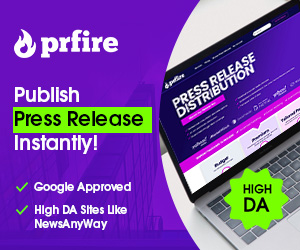The Chancellor of the Exchequer, Rishi Sunak, and the Government last week released guidelines on the continuation of the Coronavirus Job Retention Program (CJRS) – i.e., the furlough scheme or flexible furlough scheme.
The CJRS will be prolonged until the end of March 2021, considering the fact that the new shutdown is only set for 2 December 2020. This additional duration comes because when government understands that the financial repercussions of a nationwide lockdown continue longer than the shutdown itself. Here are some important points to remember.
- The CJRS was renewed until 31 March 2021.
- Before 31 January 2021, for days not served by workers, the Policy will offer up to 80% of the daily wages of workers, up to a limit of £2500 per month, and managers will pay national insurance and pension payments to the worker.
- A revision of the expanded CJRS is scheduled for January and the number of contractor contributions will be raised at that point.
Also, it is important to note that furlough fraud investigations have started by the HMRC so it is essential to properly abide by the laws and regulations of the scheme and check before every step. Also, check if you can claim salaries for your workers through this furlough scheme and then only submit an application asking for furlough funds.
WHICH WORKERS CAN APPLY TO RECEIVE FURLOUGH FUNDS?
- Workers who were working on 30 October 2020, as well as a PAYE RTI request, were submitted between 20 March 2020 and 30 October 2020, reminding the HMRC of their income.
- Workers who have been declared unemployed or quit operating on or after 23 September 2020 whether they have been rehired. That being said, for these persons, a report from the RTI had to be submitted between 20 March 2020 and 23 September 2020, reminding the HMRC of the income.
- There is no limited number of workers that companies can apply for as of 1 November 2020 and contractors can appoint workers who have not already been hired. This is concerning the regulations that have been in effect since 1 July (with reference to the furlough system for claims times that expired on 31 October 2020) where workers should only request for those workers that they have previously asserted.
- Workers can request under the extended CJRS even though they have not earlier used the policy, and you can request whether the enterprise is active or inactive. Businesses are now entitled to assert workers who have not already been furloughed under the modified CJRS. That being said, there are various formulas for the measurement of ‘standard pay’ and ‘normal hours’ for these workers.
- The ‘reference intervals’ for figuring out the daily salary of workers now vary based on what the person in question had already been claimed. Workers on paycheck on 19 March 2020 (if an RTI complete salary request was submitted to HMRC on or before 19 March) or for workers where a legitimate CJRS application was presented within the claim cycle on or before 31 October 2020, the reference time frame be the last salary period ended on or before 19 March 2020.
- For any such workers, the reference date is the last salary duration occurring on or before 30 October 2020 (it will extend only for contracts beginning on or after 1 November 2020).
DOCUMENTED AGREEMENTS, WARNING, AND NOTICE CYCLES:
- Companies must clarify in a written document to the worker that they have been furloughed and have maintained a written record for five years.
- Companies may retroactively furlough workers with effect from 1 November 2020 when the lengthened furlough scheme started. That being said, retrospective arrangements must be signed on or before 13 November 2020.
- If workers are to be deemed unemployed, managers should try to follow a rational procedure and notify workers as appropriate.
- Firms may, for the time being, continue to apply for furloughed workers who serve a mandatory fixed term.
- That being said, the Government is currently investigating whether companies may be entitled to apply for workers serving contracted or formal notice periods and is expected to modify the policy for claims periods beginning on or after 1 December 2020. Further clarification on this is required at the end of November.
- Grants attempted to claim should not be used to replace redemption fees.
- Contractual redemption expenses and statutory warning fees should be centered on the regular salary of the worker instead of the decreased furlough salary.
- Starting in December 2020, HMRC will disclose manager names and corporate registration numbers of businesses and Limited Liability Corporations that have received funds under the policy for December.
TIMELINES TO REMEMBER:
- Companies will begin to report requests under the lengthened furlough scheme on 11 November 2020 for periods starting on 1 November 2020.
- If companies plan to retroactively recruit workers as of 1 November 2020, a retroactive arrangement must be in effect on or before 13 November 2020.
- The date for applications in support of the duration of the claim to 31 October 2020 is 30 November 2020.
- Adjustments to the regulations about the application for notification times beginning on 1 December 2020.
Mr. Sunak also stated that the furlough policy was ‘planned and enforced by the Government of the United Kingdom, on account of all citizens in the United Kingdom, anywhere they reside, and that has been the scenario since March, is now the norm and will continue to be this way until next March.’ As a result, the CJRS (and the modified CJRS) applies and remains to adhere to all workers in all relocated countries.
In the wake of the above, Mr. Sunak later stated that the Gov’t’s Career Support Program, which was supposed to be introduced on 1 November 2020, has been delayed and that the Coronavirus Job Retention Bonus, which was meant to enable managers to retain employees at the workplace until the finish of January 2021 and due to be provided in February 2021, has dropped but it will be reassigned at the right time.










